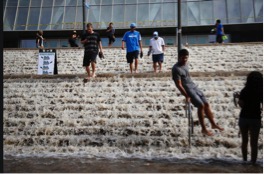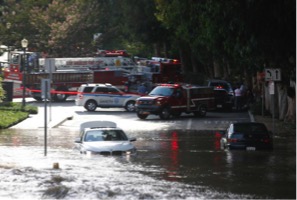The State of U.S. Drinking Water Infrastructure: Challenges and Solutions
In 2013, the American Society of Civil Engineers gave the U.S. a worrying grade of 'D' for its drinking water infrastructure. Many of the pipes and mains that make up this network are nearing the end of their useful lives, with some being over a hundred years old. Across the country, we have more than a million miles of water mains, and the condition of many remains uncertain.
Impact: For over 264 million Americans who depend on this infrastructure, the consequences can be severe. When large-diameter pipes burst, it can disrupt water supply systems, leading to significant service interruptions. These major breaks, however, represent only a small portion of the problem. The vast majority of water loss happens unnoticed beneath the ground, often through smaller pipes. According to a survey by the Water Research Foundation, water utilities face an average pipe break rate of between 0.21 and 0.27 breaks per mile of pipeline annually. Pipe breaks can lead to not only disrupted water delivery but also costly damage to private property and other critical infrastructure. There are even potential health risks associated with these incidents.
Costs: The American Water Works Association (AWWA) has warned that replacing every existing pipe could cost upwards of $1 trillion in the coming decades. By 2040, the total investment needed for expanding and repairing both drinking and wastewater systems could reach $2 trillion, according to the AWWA. Additionally, the AWWA estimates that roughly 250,000 water mains break every year, excluding smaller system failures. Annually, around 2 trillion gallons of water are lost due to leaks and breaks. A 2012 study by the Utah State University Buried Structures Laboratory found that water utilities' expenses ranged from $6,000 to approximately $7.5 million, with 52% of these costs related to insurance claims for property damage.
Funding Crisis: Insufficient funding is a major hurdle in maintaining our drinking water infrastructure. As reported by the ASCE, "From 2008 to 2012, congressional appropriations totaled just $6.9 billion—a mere average of $1.38 billion annually or $27.6 billion over 20 years, which represents only 8% of the Environmental Protection Agency's identified needs over the same 20-year period." This lack of funding, combined with aging infrastructure, poses a looming crisis that requires immediate attention and action.
Solutions: The Environmental Protection Agency (EPA) is actively working to improve the sustainability of the nation's water infrastructure. One promising solution involves rehabilitating existing infrastructure to extend its service life. HJ3 Composite Technologies plays a crucial role in reducing replacement costs by employing advanced carbon fiber technologies. Our patented carbon fiber solutions have a proven track record in repairing and reinforcing various types of pipe systems, significantly prolonging their serviceable lifespan at a fraction of the cost of replacement. It’s worth noting that HJ3's carbon fiber technology is approved for use in potable water pipes.
Are you dealing with an underground pipe that needs repair and want to learn more about HJ3's CarbonSeal reinforcement systems? Contact us at [insert email] to find out how we can help preserve your water infrastructure efficiently and cost-effectively.


Â
DANIELI 09 Series Rolling Guide
DANIELI 09 series steel rolling rolling guide is a kind of equipment used in steel production to guide and control the steel billet in the rolling process. The equipment adopts advanced rolling guide technology, which can ensure the correct position of the billet in the rolling mill and maintain a stable rolling process.
DANIELI 09 series rolled steel rolling guide has the following characteristics:
1. High-precision guidance: Through precise design and manufacture, the accurate position of the billet in the rolling mill is ensured, and the stability and consistency during the rolling process are ensured.
2. High-strength material: Made of high-strength alloy material, it can withstand working conditions under high pressure and high temperature environment, and improve the service life and reliability of the equipment.
3. Automatic adjustment function: The equipment is equipped with an automatic adjustment function, which can be adjusted in real time according to the size and shape of the billet to ensure the correct position of the billet in the rolling mill.
4. Safe and reliable: The equipment adopts an advanced safety control system, which can monitor the working status of the equipment in real time, ensure the safety of operators, and avoid equipment failures and accidents.
DANIELI 09 series steel rolling rolling guide is one of the important equipment in steel production, it can improve production efficiency and product quality, reduce production cost, and is widely used in the steel industry.
Danieli 09 Series Rolling Guide,Multi-Line Import And Export Guides,Rolling Guide For Guide Rollers,Rolling Equipment Accessories
JINGJIANG EASTSUN METALLURGICAL MECHANICS CO.,LTD , https://www.jesguide.com